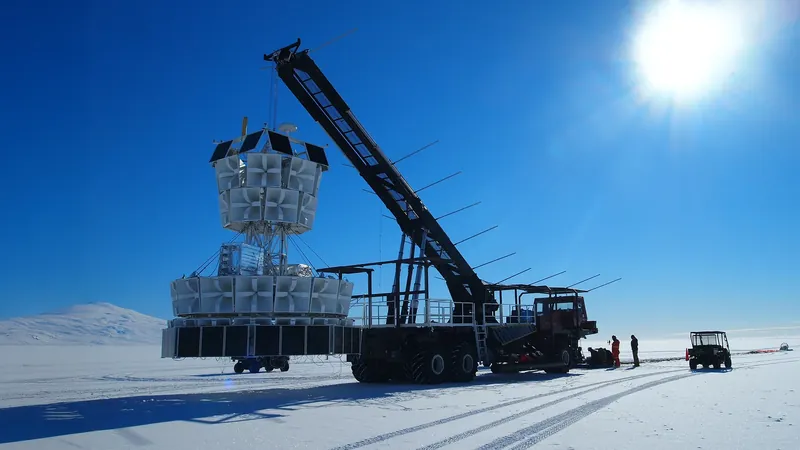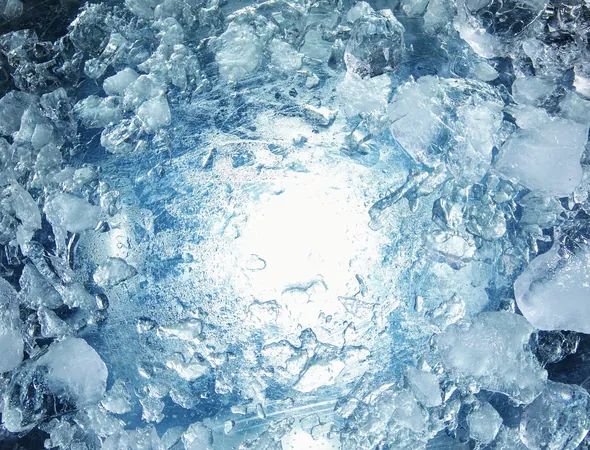
Galactic Enigma: The Struggle of Massive Star Formation at the Milky Way's Heart
2025-06-15
Author: Amelia
The Mystery of Rare Massive Stars in the Galactic Center
Astronomers have uncovered a puzzling phenomenon at the heart of our galaxy where massive stars are surprisingly rare. A recent study sheds light on star formation rates in the Galactic Center, revealing that despite the area's dense clouds of gas and dust—conditions that would typically encourage the birth of massive stars—these regions are performing below average in star production.
A Surprising Discovery
Lead researcher De Buizer states, "While earlier studies hinted at a depressed star formation rate near the Galactic Center, our latest findings show that massive stars are indeed forming there, albeit at a remarkably low rate." Through high-resolution infrared imaging techniques, they confirmed the presence of newly forming massive stars but found their numbers significantly lacking.
Extreme Galactic Conditions
So, what’s causing this slowdown in star formation? The answer seems to lie in the extreme gravitational forces surrounding the supermassive black hole at the galaxy's center. The rapid orbits of nearby stars and the influx of material toward the black hole create conditions that may disrupt gas clouds, preventing them from coalescing into stars.
The Exception: Sgr B2
Interestingly, the region known as Sgr B2 bucks this trend. Despite its low rate of massive star formation like its Galactic counterparts, it appears to retain a significant reservoir of gas and dust, hinting at the potential for future star clusters to emerge.
Rethinking Stellar Nurseries
Traditionally, vast H II regions—space clouds rich in hydrogen—like Sgr B1 and Sgr C have been labeled as thrilling hosts for massive star clusters. This study challenges that notion, suggesting that these areas do not conform to the classic definitions of star-forming regions and may even represent a new category entirely.
Hidden Stars Revealed
Using SOFIA's advanced infrared technology, researchers managed to pinpoint over 70 massive stars in these obscured regions. However, the rate of star formation remains significantly lower than the Galactic average, and the mass of these stars does not measure up to those birthed in calmer areas of the galaxy.
Concluding Thoughts
Ultimately, the Galactic Center's star-forming regions, while fascinating, demonstrate a unique character when compared to their counterparts in the calmer regions of the Milky Way. Astronomer Lim noted, “Although we find large stars here, they don’t reach the size or quantity of those found elsewhere.” Look out for Lim's compelling results, which will be presented at the upcoming 246th meeting of the American Astronomical Society in Anchorage, Alaska.









 Brasil (PT)
Brasil (PT)
 Canada (EN)
Canada (EN)
 Chile (ES)
Chile (ES)
 Česko (CS)
Česko (CS)
 대한민국 (KO)
대한민국 (KO)
 España (ES)
España (ES)
 France (FR)
France (FR)
 Hong Kong (EN)
Hong Kong (EN)
 Italia (IT)
Italia (IT)
 日本 (JA)
日本 (JA)
 Magyarország (HU)
Magyarország (HU)
 Norge (NO)
Norge (NO)
 Polska (PL)
Polska (PL)
 Schweiz (DE)
Schweiz (DE)
 Singapore (EN)
Singapore (EN)
 Sverige (SV)
Sverige (SV)
 Suomi (FI)
Suomi (FI)
 Türkiye (TR)
Türkiye (TR)
 الإمارات العربية المتحدة (AR)
الإمارات العربية المتحدة (AR)